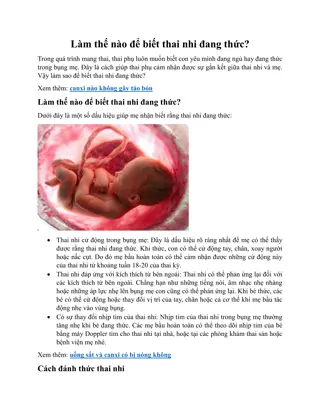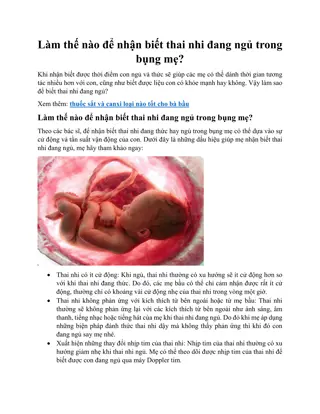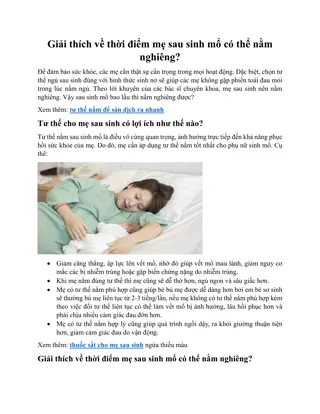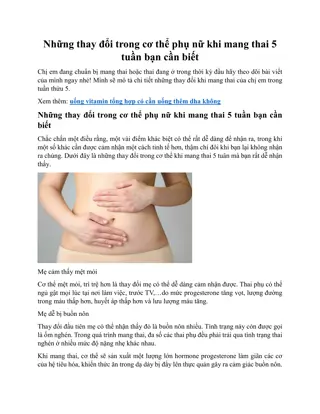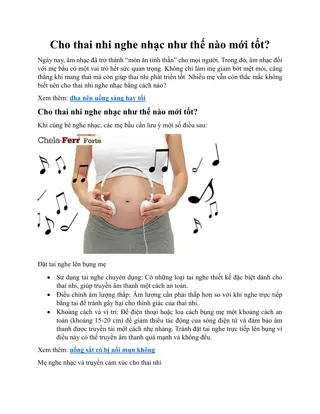Exploring the Diverse World of Proteobacteria
Proteobacteria, a phylum of Gram-negative bacteria, exhibit wide morphological and metabolic diversity with clinical, environmental, and industrial relevance. This phylum, boasting the highest number of cultured representatives, is divided into various groups based on 16S rRNA sequencing. From N2-fixing organisms like Rhizobium to acetic acid bacteria that oxidize sugars and alcohols, Proteobacteria play vital roles in different ecosystems, including symbiotic relationships with plants. The images provided offer glimpses into the intricate world of Proteobacteria and their unique characteristics.
Download Presentation

Please find below an Image/Link to download the presentation.
The content on the website is provided AS IS for your information and personal use only. It may not be sold, licensed, or shared on other websites without obtaining consent from the author. Download presentation by click this link. If you encounter any issues during the download, it is possible that the publisher has removed the file from their server.
E N D
Presentation Transcript
3. Phylum Proteobacteria GRAM NEGATIVE BACTERIA Wide morphological and metabolic diversity. Clinical, environmental, and industrial relevance Phylum with highest number of cultured representatives 5 groups (based on 16S rRNA): , , , and L. 6: Bacteria Domain (II). 2nd Biology ARA 2013-2014
2. Phylum Proteobacteria L. 6: Bacteria Domain (II). 2nd Biology ARA 2013-2014
3. Phylum Proteobacteria 3.1. -Proteobacteria: Rhizobium N2 fixing organisms: Some cyanobacteria (Bacteria) Some anoxygenic phototrophs (Bacteria) Some chemolithotrophs (Bacteria/Archaea) Some chemoorganotrophs (Bacteria/Archaea) FREE LIVING Some chemoorganotrophs (Bacteria) SYMBIONTS E.g. symbionts of leguminous plants L. 6: Bacteria Domain (II). 2nd Biology ARA 2013-2014
3. Phylum Proteobacteria 3.1. -Proteobacteria: Rhizobium RECOGNITION NOD FACTORS L. 6: Bacteria Domain (II). 2nd Biology ARA 2013-2014
3. Phylum Proteobacteria 3.1. -Proteobacteria: Rhizobium L. 6: Bacteria Domain (II). 2nd Biology ARA 2013-2014
3. Phylum Proteobacteria 3.1. -Proteobacteria. Agrobacterium pTi L. 6: Bacteria Domain (II). 2nd Biology ARA 2013-2014
3. Phylum Proteobacteria 3.1. -Proteobacteria: acetic acid bacteria They oxidize sugars and alcohols Acidophilic ETHANOL ETHANAL Gluconobacter ACETIC ACID e-e- Acetobacter H20 O2 L. 6: Bacteria Domain (II). 2nd Biology ARA 2013-2014
3. Phylum Proteobacteria 3.1. -Proteobacteria: Caulobacter Prosthecae: cytoplasmic extrusions (stalks, hyphae, or appendages) Budding division (mother cells retain their original identity) Attachment, increased surface-to-volume ratio, reduced cell sinking Aquatic bacteria (either planctonic or benthonic) PROSTHECAE L. 6: Bacteria Domain (II). 2nd Biology ARA 2013-2014
3. Phylum Proteobacteria 3.2. -Proteobacteria. Neisseria Aerobic diplococcus Penicillin sensitive Pathogens and normal microbiota Carrier state N. meningitidis( meningococcus ) Aerosols Nasopharynx Blood stream: Meningitis (sudden onset of headheache, vomiting and stiff neck) Intravascular coagulation shock L. 6: Bacteria Domain (II). 2nd Biology ARA 2013-2014
3. Phylum Proteobacteria 3.2. -Proteobacteria: Neisseria N. gonorrhoeae( gonococcus ) - Very sensitive to environmental stress (drying, sunlight, UV light ) - High incidence (STD, ETS) - Mild symptoms* in women (asymptomatic carriers). PID - Complications if untreated Sexual contact Mucous membranes of the genitourinary tract Reasons? L. 6: Bacteria Domain (II). 2nd Biology ARA 2013-2014
3. Phylum Proteobacteria 3.2. -Proteobacteria. Acidithiobacillus Chemolithotroph: donor: Fe2+ / acceptor: O2 They use large amounts of substrate (they fix CO2) pH acidic (acidiphilic) Thiobacillus ferrooxidans Acid mine drainage (formation of H2SO4 and Fe3+) (O2, water and bacteria) Biolixiviation L. 6: Bacteria Domain (II). 2nd Biology ARA 2013-2014
3. Phylum Proteobacteria 3.2. -Proteobacterias. Zooglea WASTEWATER TREATMENT BOD: Biological Oxygen Demand L. 6: Bacteria Domain (II). 2nd Biology ARA 2013-2014
3. Phylum Proteobacteria 3.3. -Proteobacteria: Legionella Rods Complex nutritional requirements (Fe) Resistent to -lactamic Terrestrial and aquatic habitats Waterborne, aerosols (no person-to-person) Pontiac fever LEGIONELLOSIS Pneumonia L. pneumophila Emerging disease (1976) Cases per 100.000 inhabitants. Spain L. 6: Bacteria Domain (II). 2nd Biology ARA 2013-2014
3. Phylum Proteobacteria 3.3. -Proteobacteria: Legionella Legionella inside an alveolar macrophage L. 6: Bacteria Domain (II). 2nd Biology ARA 2013-2014
3. Phylum Proteobacteria 3.3. -Proteobacteria: Haemophilus Haemophilus influenzae L. 6: Bacteria Domain (II). 2nd Biology ARA 2013-2014
3. Phylum Proteobacteria 3.3. -Proteobacteria: Pseudomonas More than 100 species Some species utilize over 100 different compounds Aerobic chemoorganotrophic rods Some chemolitotroph (H2, CO) Some anaerobic (NO3- / fermentation) Sugar oxidation: Entner-Doudoroff pathway Fluorescent pigments L. 6: Bacteria Domain (II). 2nd Biology ARA 2013-2014
3. Phylum Proteobacteria 3.3. -Proteobacteria: Pseudomonas Pseudomonas aeruginosa Opportunistic pathogen; intrahospitalary infections Resistence plasmids (plasmids R) Respiratory tract infections Skin infections Bacteremia Endocarditis Joint infections Fastrointestinalinfections UTI Eye infections CNS infections Upper respiratory tract infections Cystic fibrosis complications L. 6: Bacteria Domain (II). 2nd Biology ARA 2013-2014
3. Phylum Proteobacteria 3.3. -Proteobacteria: Pseudomonas DEGRADATIVE MEGAPLASMIDS L. 6: Bacteria Domain (II). 2nd Biology ARA 2013-2014
3. Phylum Proteobacteria 3.3. -Proteobacteria: Family Enterobacteriaceae Enteric bacteria Facultatively aerobic, gram negative rods Fermentation of sugars to organic acids Some respire NO3- to NO2- (never to N2) Virulence factors and pathogenicity L. 6: Bacteria Domain (II). 2nd Biology ARA 2013-2014
3. Phylum Proteobacteria 3.3. -Proteobacteria: Family Enterobacteriaceae Escherichia Warm blooded animals Gut microbiota (comensals) Pathogenic strains: E. colienterotoxigenic (ECET) E. colienteropathogenic (ECEP) E. colienterohemorrhagic (ECEH) (STEC) E. coli O157:H7 E. coli O104:H14 Gastroenteritis Hemolytic uremic syndrom (HUS) Urinary tract infections (UTI) L. 6: Bacteria Domain (II). 2nd Biology ARA 2013-2014
vitamin K L. 6: Bacteria Domain (II). 2nd Biology ARA 2013-2014
3. Phylum Proteobacteria 3.3. -Proteobacterias. Familia Enterobacteriaceae Salmonella Habitat: gastrointestinal tract of wild and domestic animals, birds, pets, and insects. Zoonosis. Main pathogenic serovars: S. typhimurium: salmonellosis (enterocolitis) S. typhi: typhoid fever L. 6: Bacteria Domain (II). 2nd Biology ARA 2013-2014
3. Phylum Proteobacteria 3.3. -Proteobacteria: Family Enterobacteriaceae Shigella Reservoir: infected gut S. dysenteriae: - Shigellosis or bacillary dysentery( disenter a bacilar ) - HUS Shigella cells invading intestinal epithelium L. 6: Bacteria Domain (II). 2nd Biology ARA 2013-2014
3. Phylum Proteobacteria 3.3. -Proteobacteria: Family Enterobacteriaceae Yersinia: Y. pestis PLAGUE (bubonic, pneumonic and speticemic). Zoonotic disease. Gangrene and black spots ( black death ) Buboes ( bubones ) Bacteria in lung tissue L. 6: Bacteria Domain (II). 2nd Biology ARA 2013-2014
3. Phylum Proteobacteria 3.3. -Proteobacterias: Vibrio Curved and straight rods Aquatic media Many species, some pathogenic: V. cholerae: cholera CHOLERA TOXIN L. 6: Bacteria Domain (II). 2nd Biology ARA 2013-2014
3. Phylum Proteobacteria 3.3. -Proteobacteria: Photobacterium Autoinduction: quorum sensing FMN luciferase FMNH2 + O2 + RCHO FMN + RCOOH + H2O + luz Inducer molecule: acyl homoserine lactone (AHL) NADH NAD+ L. 6: Bacteria Domain (II). 2nd Biology ARA 2013-2014
3. Phylum Proteobacteria 3.4. -Proteobacteria: Bdellovibrio Predator of other bacteria L. 6: Bacteria Domain (II). 2nd Biology ARA 2013-2014
3. Phylum Proteobacteria 3.4. -Proteobacteria: SULFATE (AND SULFUR) REDUCING BACTERIA (SRB)* Desulfo- (generally) or Desulfuro- Donors H2 They reduce sulfate/sulfur(acceptors) O. M. Final products: H2S Strict anaerobes (anoxic environments) Group I: Acetate cannot be used as donor Sulfate reducing bacteria Group II: H2and acetate can be used as donors Sulfate reducing bacteria Fixation of CO2 (acetil-CoA pathway) Group III: H2or organic matter as donors S and sulfite reducing bacteria (NEVER sulfate) L. 6: Bacteria Domain (II). 2nd Biology ARA 2013-2014 *Some sulfate-reducing bacteria are not delta-proteobacteria
3. Phylum Proteobacteria 3.4. -Proteobacteria: SULFUR AND SULFATE REDUCING BACTERIA Marine sediments m.o. O2 +0.8 NO3- Mn+4 Fe+3 0 E (V) Consortia of SRB/methane oxidizing Archaea SO4-2 Stratification of electronic acceptors Limited organic matter Most important metabolism: sulfate reduction Competence (or not---) with methanogenic Archaea -0.2 CO2 L. 6: Bacteria Domain (II). 2nd Biology ARA 2013-2014
3. Phylum Proteobacteria 3.4. -Proteobacteria: MYXOBACTERIA Vegetative cells: long rods without flagella (names: Myxo ). Gliding. Fruiting bodies: cell-to-cell communication and differentiation L. 6: Bacteria Domain (II). 2nd Biology ARA 2013-2014
3. Phylum Proteobacteria 3.5. -Proteobacteria: Campylobacter and Helicobacter (both microaerophilic) Campylobacter: acute gastroenteritis, food borne disease (chicken meat ) L. 6: Bacteria Domain (II). 2nd Biology ARA 2013-2014
Helicobacter: gastritis and ulcers L. 6: Bacteria Domain (II). 2nd Biology ARA 2013-2014 http://www.nobelprize.org/nobel_prizes/medicine/laureates/2005/marshall-lecture.pdf
Nitrospira (independent phylum) Nitrifying Archaea 3. Phylum Proteobacteria 3.6. OTHER PROTEOBACTERIA: NITRIFYING BACTERIA , , and Proteobacteria Electron donors: NH4+and NO2-/ Acceptor: O2 (Nitroso / Nitro ) They consume large amounts of substrate: chemolithoautotrops/ chemolithoheterotrophs Soils and waters; ammonia-rich sites; leaching of NO3- Nitrification NH4+ NO2- NO3- Nitrosomonas Nitrobacter AMO: ammonia monooxygenase NOR: nitrite oxidoreductase L. 6: Bacteria Domain (II). 2nd Biology ARA 2013-2014
3. Phylum Proteobacteria 3.6. OTHER PROTEOBACTERIA: SULFUR OXIDIZING BACTERIA , Proteobacteria Donors: H2S, S0, S2O32-, metallic suflides, H2 / Acceptor: O2 (sometimes NO3- ) S0 accumulation inside or outside the cell Acidithiobacillus: acidiphilic (A. ferrooxidans FeS2, Fe2+); autotrophs Thiomargarita: anaerobic oxidation (acceptor: NO3-) L. 6: Bacteria Domain (II). 2nd Biology ARA 2013-2014
Hydrothermal vents: H2S, H2, CO2, O2, N2... L. 6: Bacteria Domain (II). 2nd Biology ARA 2013-2014
3. Phylum Proteobacteria 3.6. OTHER PROTEOBACTERIA: PURPLE BACTERIA Anoxygenic phototrophs Reaction centre: bacteriochlorophylls Antenna pigments: BChl + carotenoids Photosynthetic systems: invaginations of the cytoplasmatic membrane L. 6: Bacteria Domain (II). 2nd Biology ARA 2013-2014
3. Phylum Proteobacteria 3.6. OTHER PROTEOBACTERIA: PURPLE BACTERIA ATP: Cyclic NAD(P)H: Reverse electronic flow photophosphorilation NAD(P)+ BChl EXCITED BChl EXCITED NAD(P)H Eo (-) cte- e- cte- e- H+ H+ H+ H+ H2S S0 Fe2+ e- BChl BChl Eo (+) BASAL BASAL S0 SO42- Fe3+ LIGHT NO external electron donors for ATP External electron donors for NAD(P)H Images property of Fernando Santos L. 6: Bacteria Domain (II). 2nd Biology ARA 2013-2014
3. Phylum Proteobacteria 3.6. OTHER PROTEOBACTERIA: PURPLE BACTERIA -Proteobacteria ( purple sulfur bacteria ): highly sensitive to O2; highly tolerant to [H2S] S compounds as electron donors. Photoautotrophs (Calvin cycle) Photoheterotrophs N2fixers -Proteobacteria ( purple nonsulfur bacteria ): more tolerance to O2; very sensitive to high [H2S] Chenoorganotrophs, Photoheterotrophs, photoautotrophs N2 fixers Anoxic areas blooms Meromictic lakes, microbial mats Sulfide-rich waters L. 6: Bacteria Domain (II). 2nd Biology ARA 2013-2014 (SRB)
Metabolic diversity of nonsulfur purple bacteria L. 6: Bacteria Domain (II). 2nd Biology ARA 2013-2014
Microbial mats: stratification of microbial populations driven by environmental gradients Images property of Fernando Santos L. 6: Bacteria Domain (II). 2nd Biology ARA 2013-2014
3. Phylum Proteobacteria 3.6. OTHER PROTEOBACTERIA: METHANOTROPHS Methylotrophs vs. methanotrophs Biotic and abiotic methane Where does the methane come from? Methanotrophs vs. methanogens L. 6: Bacteria Domain (II). 2nd Biology ARA 2013-2014
3. Phylum Proteobacteria 3.6. OTHER PROTEOBACTERIA: METHANOTROPHS (Methylo ) Type I Type II L. 6: Bacteria Domain (II). 2nd Biology ARA 2013-2014
Methane as energy source Methano Methanol Formalhehyde CO2 Methane monooxygenase L. 6: Bacteria Domain (II). 2nd Biology ARA 2013-2014
Methane as carbon source Methane Methanol Formalhehyde biomass Type I Type II Ribulose monophosph ate pathway Serine pathway L. 6: Bacteria Domain (II). 2nd Biology ARA 2013-2014
3. Phylum Proteobacteria 3.6. OTHER PROTEOBACTERIA: RICKETTSIAS / Proteobacteria Obligate intracellular parasites* Induce phagocytosis, do not survive outside hosts Highly specific energy metabolism*, synthesize few compounds Transmitted by arthropod vectors Damage to blood vessels Epidemic tifus (Rickettsia prowazekii) Vector: human louse Rocky Mountains spotty fever (Rickettsia rickettsii) Vector: tick *Q Fever (Coxiella) Vectors: tick, aerosols, dairy products One bacteria is enough!! (Biological weapon) Fever, headheach, weakness Rash Organ infections High mortality untreated L. 6: Bacteria Domain (II). 2nd Biology ARA 2013-2014 *Exception
















